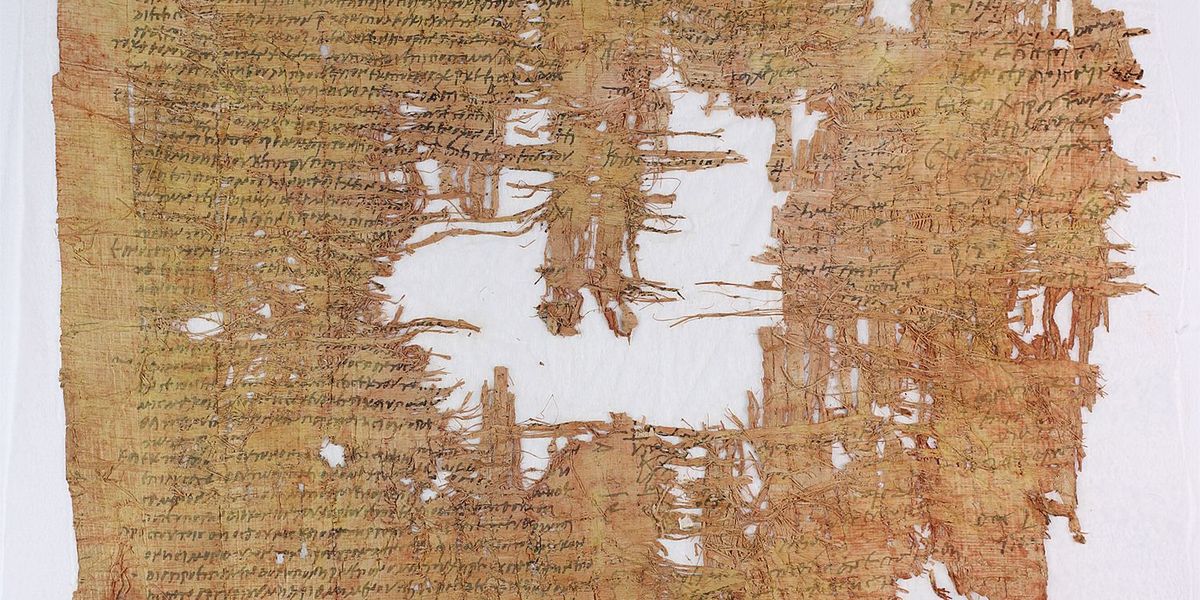Das einzige Porträt, das zu Lebzeiten von Konstantin Palaiologos XI., dem letzten Kaiser des Römischen (Byzantinischen) Reichs, erstellt wurde, wurde auf dem Peloponnes in Griechenland gefunden. Im Peloponnes, genauer gesagt in Mystras, wurde er zum Kaiser des Römischen Reichs gekrönt.
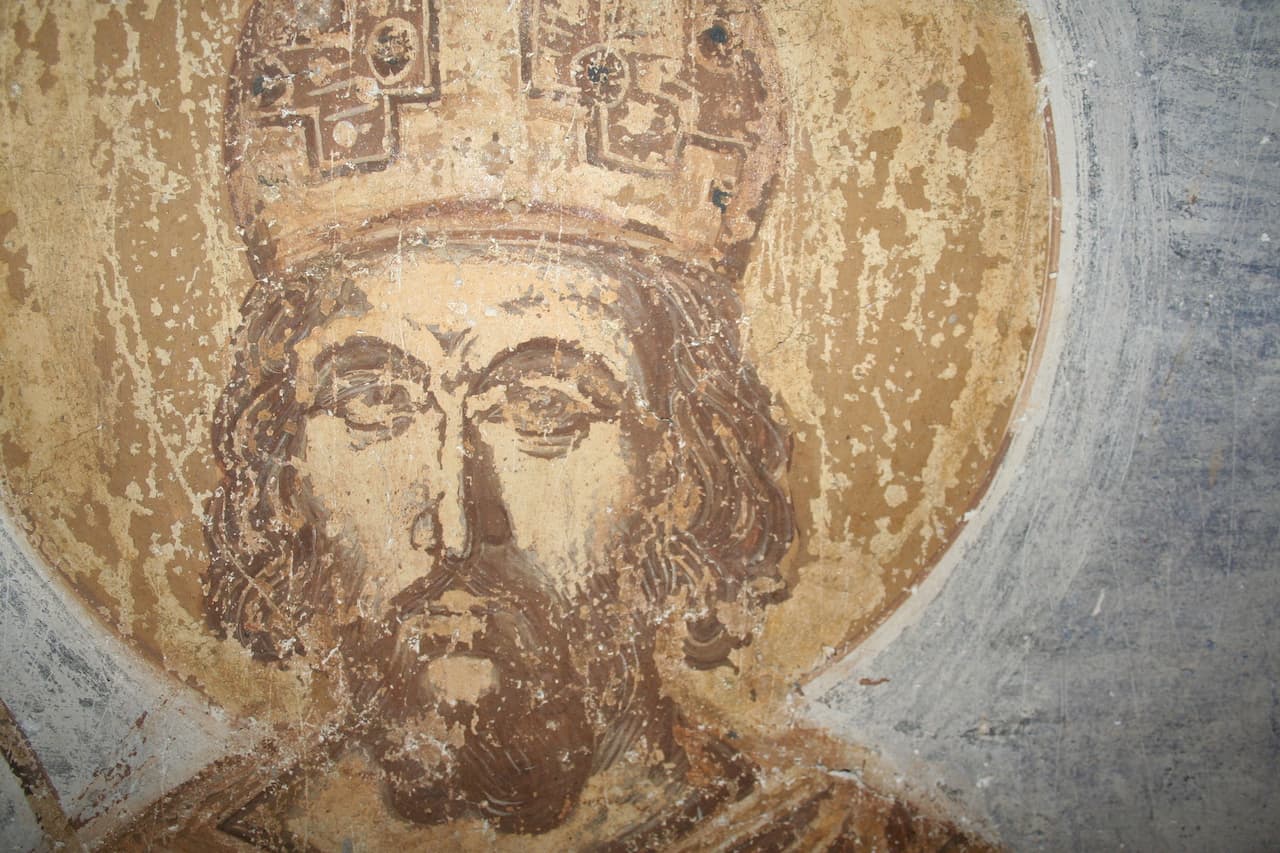
The Only Contemporary Portrait of the Last Byzantine Emperor, Constantine XI Palaiologos, Discovered in Greece
An exceptional discovery has brought to light the only known contemporary representation of the last emperor of the Byzantine Empire, Constantine XI Palaiologos. This valuable work was uncovered during restoration work at the main church of the former Monastery of the Archangels, located in the regiwww.labrujulaverde.com
The Only Contemporary Portrait of the Last Byzantine Emperor, Constantine XI Palaiologos, Discovered in Greece
by Guillermo CarvajalDecember 13, 2024
Detail of the discovered contemporary portrait of Constantine Palaiologos XI. Credit: Ministry of Culture of Greece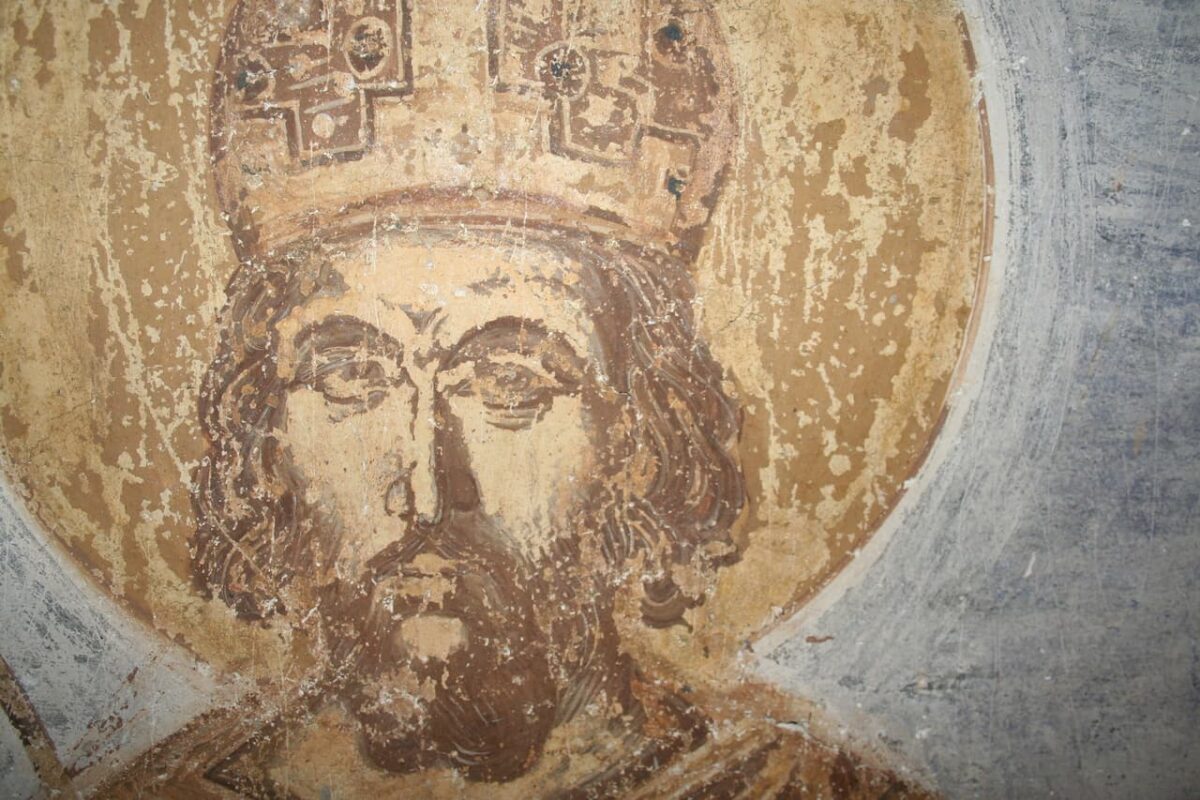
An exceptional discovery has brought to light the only known contemporary representation of the last emperor of the Byzantine Empire, Constantine XI Palaiologos. This valuable work was uncovered during restoration work at the main church of the former Monastery of the Archangels, located in the region of Aigio, Greece.
The finding, dating back to the mid-15th century, is a priceless historical testimony directly connected to the final days of the Byzantine Empire.
The team, led by archaeologist Dr. Anastasia Koumousi, director of the Ephorate of Antiquities of Achaia, identified the portrait in a second layer of frescoes showcasing high artistic quality, reflecting the aesthetic trends of Constantinople at the time.
The newly discovered portrait, the only contemporary of the last Byzantine emperor, Constantine Palaiologos XI. Credit: Ministry of Culture of Greece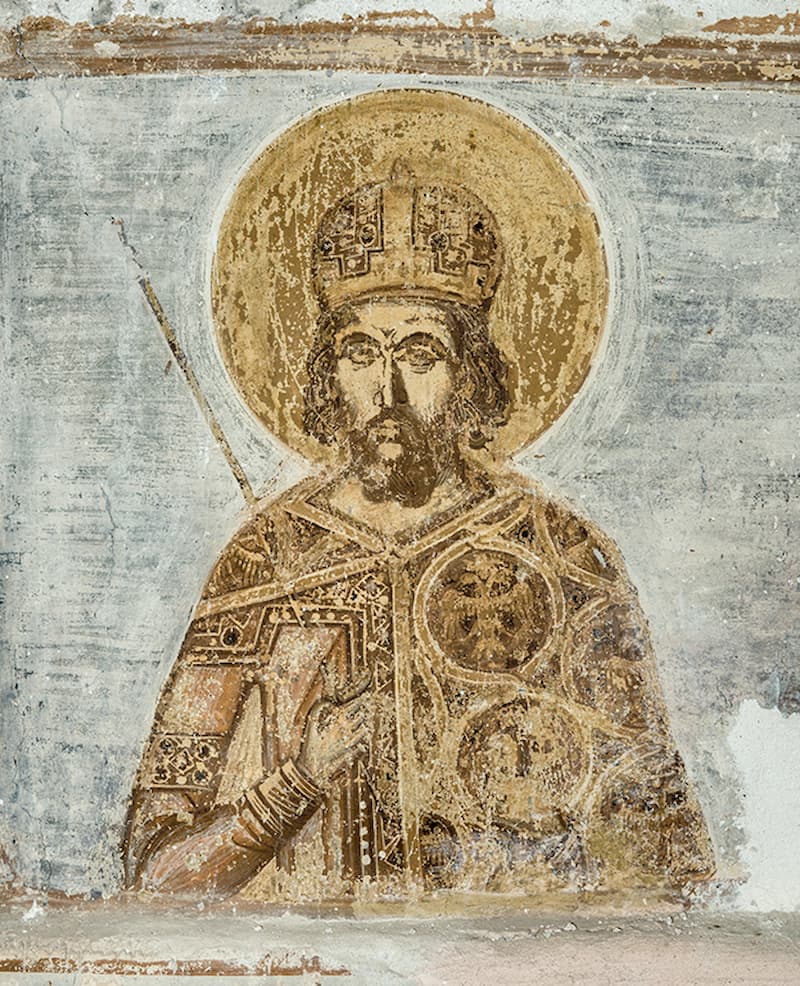
Based on stylistic criteria, the work can be confidently dated to the years 1449–1453, the brief period of Constantine XI’s reign before the fall of Constantinople.
The fresco depicts a mature man bearing the distinctive symbols of imperial authority: a luxurious purple mantle adorned with embroidered crowned double-headed eagles—the emblem of the Palaiologos dynasty—a gem-encrusted crown, and a scepter topped with a cross. These characteristics unequivocally identify the subject as the last Byzantine emperor.
What makes this portrait unique is its authenticity as a direct representation of the emperor during his lifetime. In the words of Greece’s Minister of Culture, Lina Mendoni, the portrait does not follow the idealized or formal model of traditional imperial portraits but is a realistic work based on the direct observation of the artist, who likely worked in the presence of the emperor himself. This feature distinguishes it as a unique testament to the historical figure of Constantine XI, diverging from the idealized depictions found in Byzantine icons.
Detail of the portrait. Credit: Ministry of Culture of Greece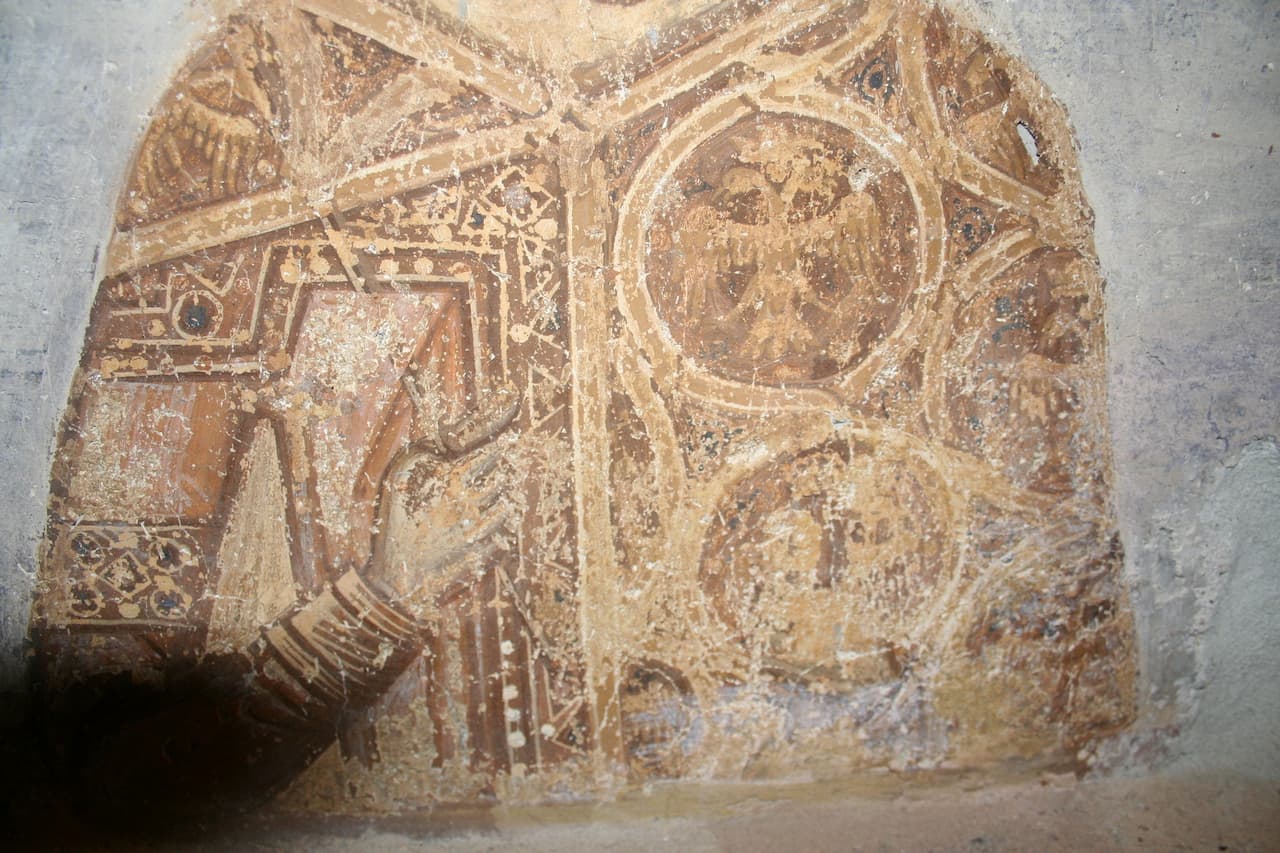
The artist who created the work was likely from Mystras, a city closely associated with Constantine, who ruled there as despot before ascending to the imperial throne. This reinforces the personal connection between the monarch and the artwork, commissioned during a monastery renovation funded by the emperor’s brothers, Demetrios and Thomas, after the end of a familial civil war.
This portrait is not only an outstanding example of late Byzantine art but also holds profound historical and symbolic significance. It represents the end of an era and the figure of an emperor who became a symbol of resistance against the Ottoman conquest. Constantine XI heroically perished during the final siege of Constantinople on May 29, 1453, an event that marked the end of the Byzantine Empire and the beginning of a new era in the region.
Far from idealizing him, the image of the emperor portrays him as a mortal man, with a thin, serene, and noble face reflecting both his dignity and the tensions of a tumultuous period. This discovery provides a direct connection to the final years of Byzantium and enriches our understanding of the final chapter of this fascinating empire.
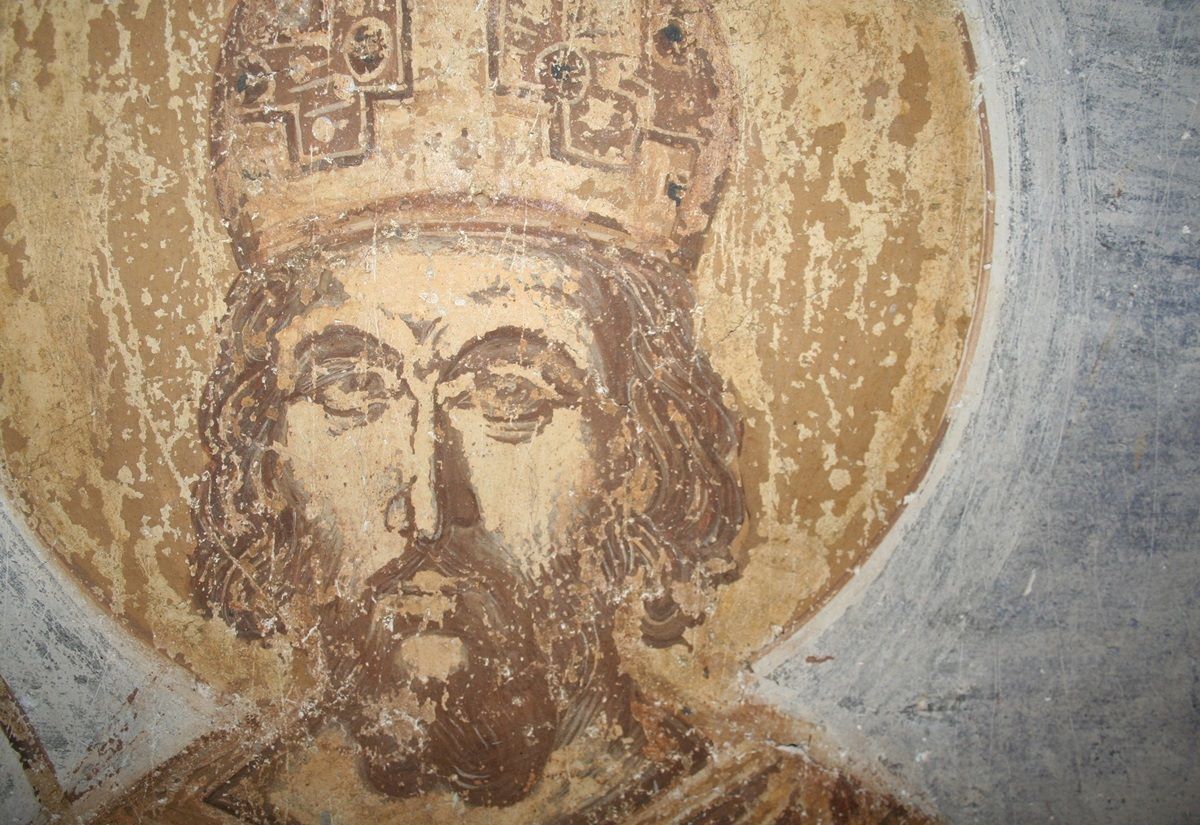
Das einzige zeitgenössische Porträt des letzten byzantinischen Kaisers Konstantin XI. Palaiologos in Griechenland entdeckt
In der katholischen Kirche des ehemaligen Klosters Taxiarchon Aegialia, nur 15 km von Aegio entfernt, sind zwei Schichten künstlerisch hochwertiger Fresken aus spätbyzantinischer Zeit erhalten. Bei Restaurierungsarbeiten identifizierte die Archäologin Dr. Anastasia Koumousi, Direktorin des...
Aktuelles 2024, 20.12.2024“
Sie haben keine Berechtigung Anhänge anzusehen. Anhänge sind ausgeblendet.
© Ministerium für Kultur Griechenland
Sie haben keine Berechtigung Anhänge anzusehen. Anhänge sind ausgeblendet.
© Ministerium für Kultur Griechenland
Anhänge
Sie haben keine Berechtigung Anhänge anzusehen. Anhänge sind ausgeblendet.

